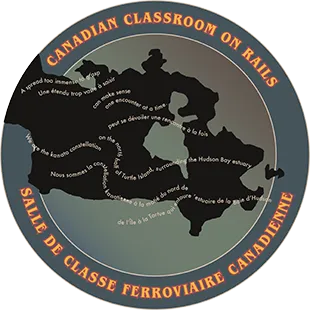Programs Offered Aboard
Day Programs
(6 hr) in railcar Tracy (‘’grassy’’) on the Alberta Prairie Railway out of Stettler, AB. These programs are offered on Kanata Day, Thanksgiving, Spring/Victoria Day and Heritage Day (newly added for 2025) holiday weekends – see footage of Recent and up-and-coming events to get a visual idea of what these entail.
Three-Day Program
This program is proposed for space on the transcontinental train between Edmonton, AB and Saskatoon, SK on Remembrance Day 2025 and the preceding weekend, with visits to Duck Lake, Prince Albert, Batoche, the Cenotaph in Saskatoon, and the Diefenbaker Centre for the Study of Canada.
Based on our experience of this event, we`ll explore possibilities of further overnight events: to Winnipeg ‘Tracking Riel,” including visits to the site of the non-colonial democratic regime that birthed Manitoba, and a trip to the West Coast ‘‘In the Steps of Emily Carr,’’ tracing her artistic studies and the time she spent in Indigenous villages.
Stationary Programs
These programs are offered at the Chinook Centre for Arts and Restorative Education in our three railcars, located in Cranbrook, BC.
‘‘`opping the Train’’ is a series for middle school and up: Parts II & III (Stopping and Shopping the Train) on the relationship of Indigenous peoples to railways when the steel came and now with First Nations as owners.
Hopping the Train
This is the first of a trio of lessons presented to middle school (junior high) students on the relationshipS of Indigenous peoples with railwayS. I emphasize the plural because these relationships are varied and complex, and each variation grows out of a specific context.
The first lesson, a PowerPoint with songs and some movement, is offered in students’ own classrooms, familiarizing them with the presenter on home ground before taking them into an unfamiliar, potentially distracting and even overstimulating setting of the Classroom On Rails.
While the images for the video below include good historic scenes of the line and some of the tourist excursion train that operates over a small portion of the line, it’s missing shots from the point of view of the song’s narrator: the hobos, riding on the roofs of the passenger coaches. For those, you’ll have to open the PowerPoint.
And here is our very own CCOR video of the Kettle Valley Line!
This lesson was also designed as a youth-friendly entrée to the larger topic. When I discussed content of a CCOR presentation with middle school teachers, their first wish was for something on reconciliation, reflecting the curriculum focus on recognition and redress of historic wrongs. I don’t deny these occurred or that they must be faced as part of a checkered past and present.
But as an outsider coming in, I wanted to touch students’ sense of adventure and exploration with something other than more of the same. Saddling them with responsibilities for their parents’ failings is too much like old catechisms and confessions of sins. They’ll recite them dutifully, “Yes, we did bad,” but their hearts aren’t there and they’d rather be somewhere else.
Instead, I decided to introduce the rail topic in a lesson on riding the rails, “Hopping the Train,” from the dirty thirties to the present starting with a warning that this was illegal, dangerous and not recommended. We might simulate the thrills and excitement on screen, I didn’t want any of my listeners telling a rail police officer they thought it was a cool idea they’d learned in school!
In any case, hopping freights is much harder now. Sealed containers have replaced the sliding-door boxcar as the backbone of the freight train, with tank cars for oil and other liquids, hopper cars for grain, potash, coal and sulphur and gondolas and flatcars for pipe and steel, forest products, and heavy machinery. Not much to grab onto, let alone ride in securely, with these.
So with pictures and music we look at who rode the rails (mostly but not all, males including teenagers), where they rode (safest and most dangerous places), when (times of day and year), why (most in search of work, some to get home to see families) and why (mass joblessness) – the five Ws of journalism. We learned the chorus of the Don Schlistz/Kenny Rogers song, “The Gambler, ” the story of a meet on an overnight train:
You gotta know when to hold ‘em, know when to fold ‘em;
Know when to walk away, know when to run.
As the basis of their prep (homework) for next when, I told them, “We’re going to look at three Indigenous leaders—Crowfoot, Piapot and Louis Riel—and their peoples who faced the coming of the railway. I want you to look up their stories, and find out what cards each held in his hand and how he played them, for next week’s lesson.” (“Stopping the Train”).
Stopping the Train
This second lesson is the pivotal one in the set of three. The first is required prep for this one and may be taken at other locations including in the visiting schools before their visit to our Classroom. The third is optional but recommended follow-up in visitor’s home classrooms.
Crowfoot, Piapot and Louis Riel (pictured below), the three Indigenous leaders chosen for their different stances to the coming of the railway—negotiation, passive and armed resistance—are not profiled in detail here. That presentation will only be made live by an authorized CCOR representative in our Classroom car or by special request at other locations outside The Chinook Centre’s catchment area.
These three leaders share three traits in common:
- All three have mixed parentage or mixed upbringing (multicultural, migrants).
- All three crossed the Canada-US border, and two visited Montreal, one on the CPR. the other, via the US south of the Great Lakes, in West-East dealings (travellers).
- Each of the three had a parallel in non-Indigenous folklore: Ruth, Moses and Gandhi.
These traits suggest that wide experience and diversity is good grounding for leadership. We’ll see if this applies equally to Non-Indigenous leaders in the Canadian constellation.
We’ll also look at each of their legacies as seen at the ends of their lives and as it stands today.
CLICK HERE for a CCOR video and song on Piapot.
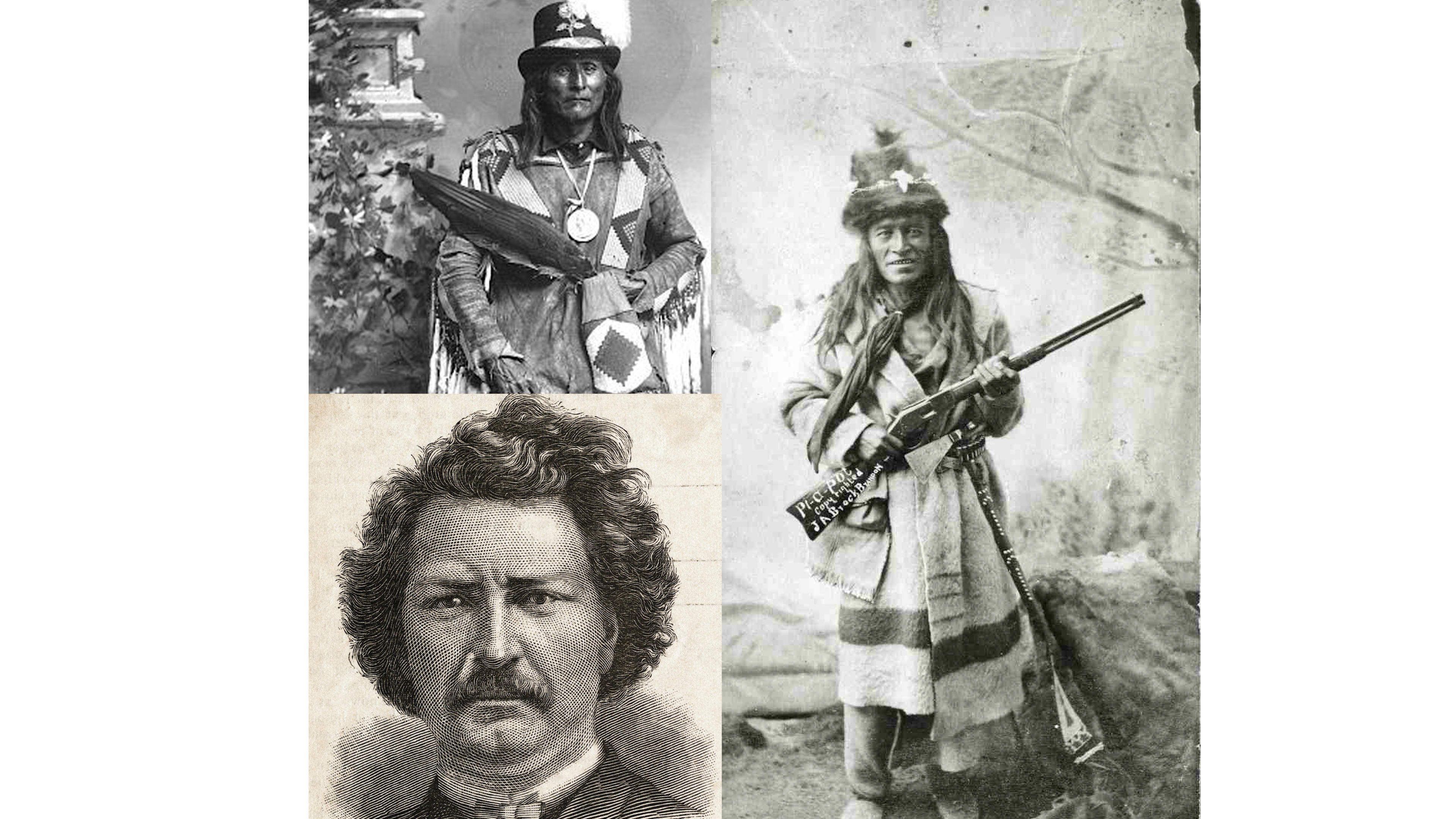
Shopping the Train
This is resource material for a further-study third lesson that can be undertaken by teachers, students and homeschoolers on their own after the other two lessons have been completed.
Indigenous peoples have been adept at mastering rail and related technologies to meet their own needs and contribute to a larger economy. Two regional railways, one in Québec and Labrador, the other in Manitoba and Saskatchewan, are owned and operated by First Nations. Another two, a Vancouver Island line abandoned in 2011 but with the tracks still in place and a proposed international northern railway now in receivership, are in a project stage with First Nations consulted and as major players.
CLICK HERE to access additional information on Shopping the Train further study.
CLICK HERE to access the Shopping the Train PowerPoint.
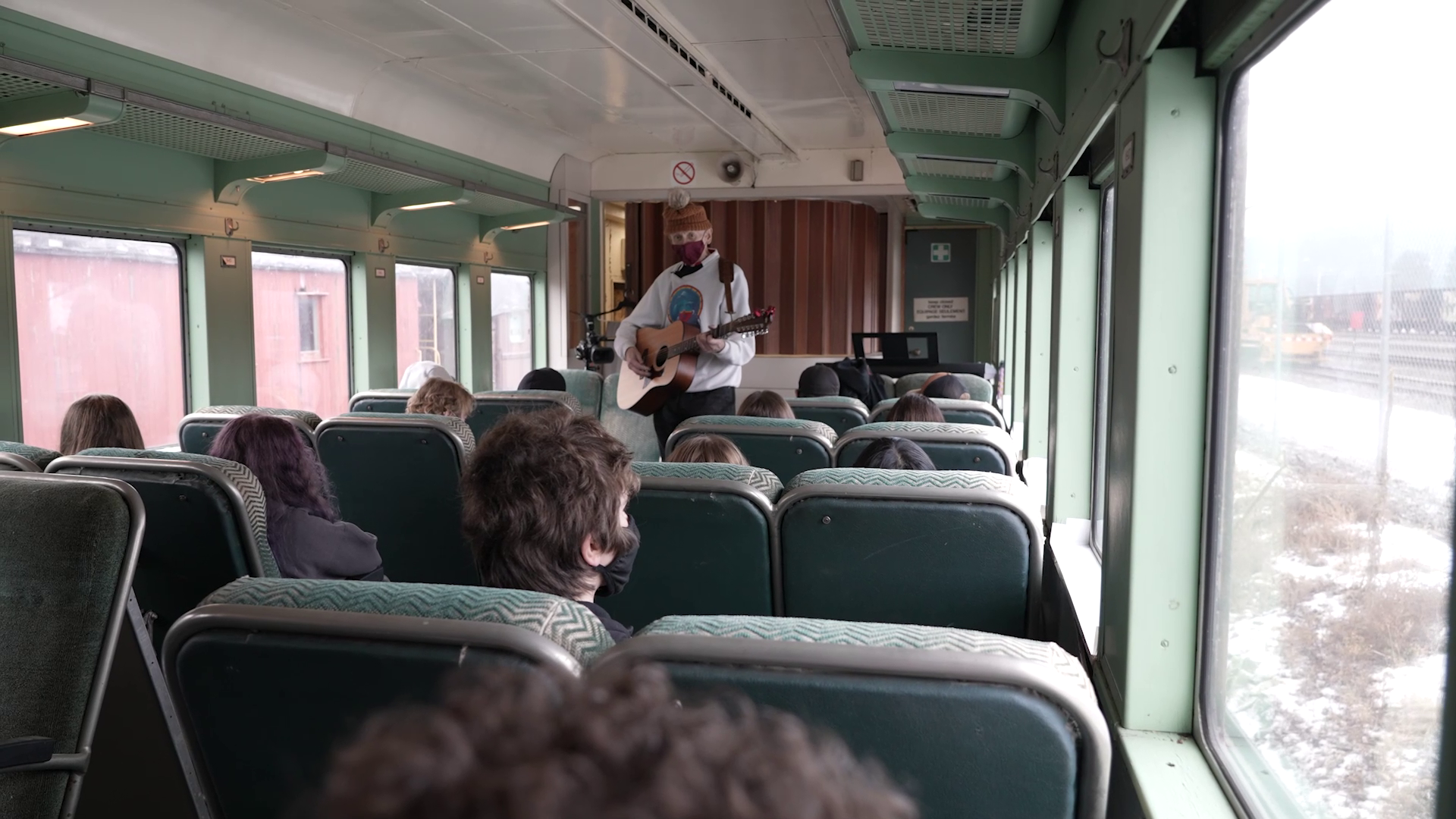
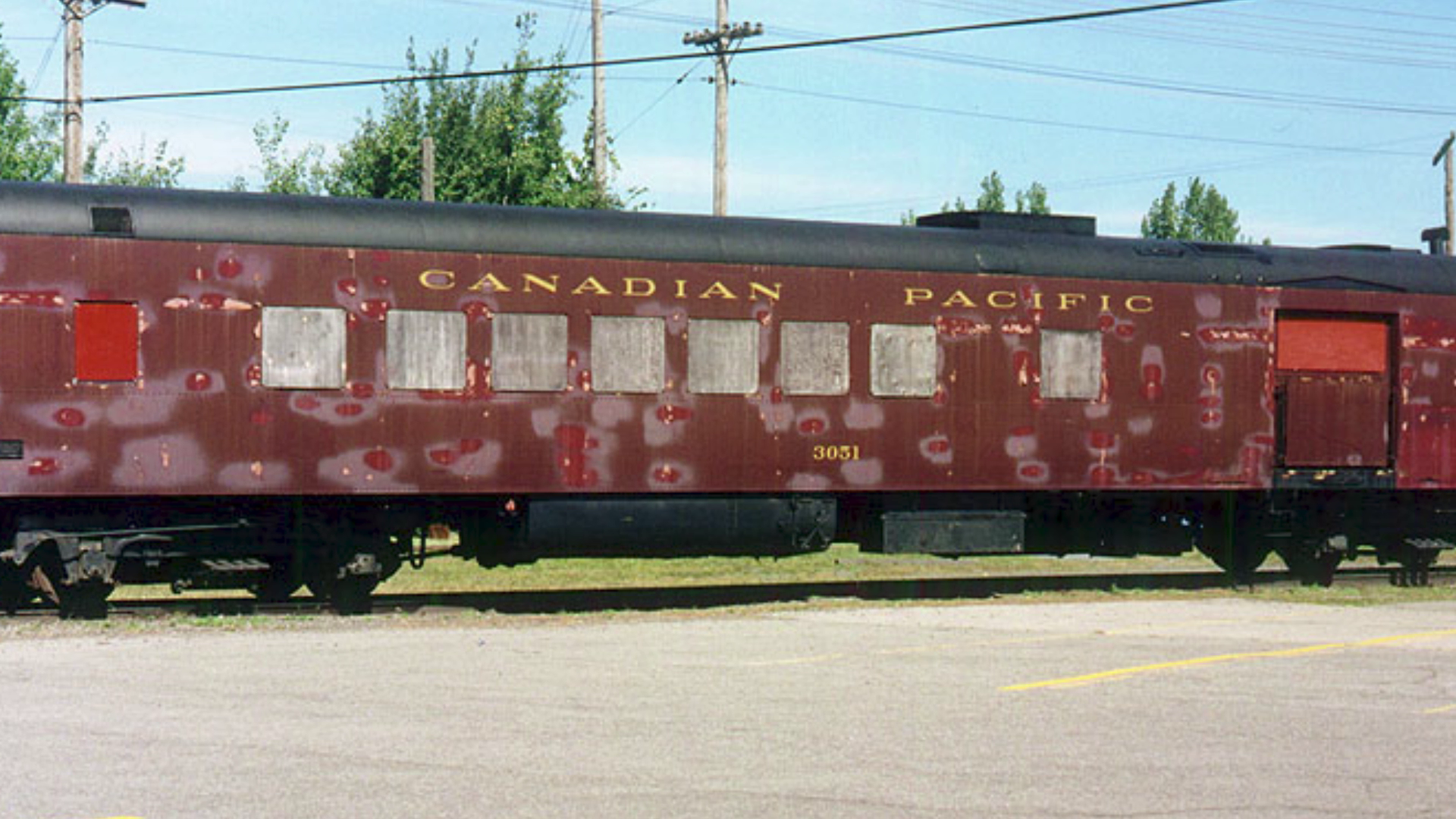

Maps, Feathers, Flags, and Changing Faces
This program is offered at the Chinook Centre, and is a component part of many of one-day Classrooms On Rails. It includes a number of learning activities with specific materials and these have to be led by experienced Classroom staff. In these we learn that the story of Canada is more a journey than fixed peoples, places or things. Each of the upper-case words in the title (1 M & 3 Fs) and we ourselves – are more than we can see at any one time. Discovering and sharing this makes our shared journey an adventure.
After the program at the Chinook Centre or on a moving train, there are opportunities and materials for continued learning and follow up at home, in school classes and on line.
Edmonton Crossings
Is a video song that needs to be moved to in order to set its message in body and brain, and shows how the gathering place we now call Edmonton began as a trading post where different first nations came together canoeing, wading or fording the River on horseback. The first fixed crossing were iron and steel bridges built for the ‘‘iron horses’’ and three of these still stand as well as wooden trestles in the Mill Creek Ravine. Only one of these now carries regular trains. A second one, the High Level, has a street car on its upper deck in the summer months, and it was this Bridge, built by Canadian Pacific, that led to Strathcona and Edmonton becoming one city.
Once students learn to dance to this song in a group, they can download the video on their devices, then follow up by finding traces of the former rail lines that used to crisscross the city.
Listen now to Edmonton Crossings
A song video and learning package that brings together stories of a region’s past and present.
Edmonton’s High Level Bridge is not as long or high as Lethbridge’s but packs together a lot of symbolism and history that precedes Contact with Europeans. The North “Saskatchewan” (Cree for “swift-flowing”) River the Bridge spans became a boundary between Siksika (Blackfoot) and Nehiyah (Cree) territory and the Hudson’s Bay Company built Fort Edmonton as a trading post on the north bank on land that’s now the lawn bowling greens below the Legislature Building.
Traders from the two confederacies came to the post, setting up camps outside its walls. When visitor volume was high, the southern First Nations camped on the south bank or the heights above, fording the river depending on season. The Blackfoot, whose territory extended south into Montana, became masters of the horse trade. Though the Cree acquired horses later their centred around the river that, despite its name, was not as fast, or potentially deadly to swimmers, as the narrower Bow and Oldman that join to form the South Saskatchewan.
Surveyors initially proposed the North Saskatchewan as the route for the first transcontinental railway following the French and Scottish voyageur waterways of the past three centuries. But when political pressures, including American incursion from farther south on the plains, led to the political pressure for a southern route across the plains. This choice turned the younger Fort Calgary, a North West Mounted Police post, into a rail divisional point that grew into a city.
Settlers and speculators brought west by Canadian Pacific branched to the North Saskatchewan River valley in search of fertile farmland and founded the Village, Town and City of Strathcona, (named after the man who drove CP’s Last Spike in the Rockies) on the height above the River’s south bank. Private interests eventually built the Calgary and Edmonton Railway that paralleled the route of the earlier E & E train and stagecoach, with its terminus on the edge of the riverbank at what’s now End of Steel Park. John Walter’s ferry provided a dependable link to the north side Edmonton. The district of Alberta was still part of the Northwest Territories.
Rail branch lines were springing up in the way northern bush pilots would later start airlines. With the plans of a second and third transcontinental railways (the Canadian Northern and Grand Trunk Pacific that would later merge in CN) a group of local entrepreneurs incorporated the Edmonton, Yukon and Pacific Railway (EYP). Though it never reached Yukon—it got as far northwest as Stoney Plain—it was not a failure. Its real goal was to be an artery between rail traffic on the two sides of the River, funded by fees from the interchange of freight cars. With federal funding EYP built the Lower Level Bridge in 1900 the first surviving link across the River.
An EYP trip to Edmonton began near the Molson Brewery on Gateway Boulevard, ran straight east to Mill Creek and down its ravine, over the Low Level Bridge and west along the River’s north bank, providing coal to the Rossdale Generating plant, climbing the Valley above Victoria Golf Course, turning into Groat Ravine, and surfacing on the flats above and turning east to join with Grand Trunk Pacific year the Brewery and 122 Street and 104 Avenue.
With the two northern, north side Edmonton transcontinental railways building branch lines southward, CP decided to secure its place as the main link between Alberta’s two major cities. It bought out the C & Edmonton Railway and planned to build into downtown Edmonton. It was not going to use the EYP route down the Mill Creek Ravine and up the Groat Ravine, deciding to build its own direct, “high level” crossing between the flats above the river valley on both sides.
From 1910-13, it began building the High Level Bridge while the Legislature building was under construction and Fort Edmonton was still standing below. A grant from the federal government enabled the building of a lower deck on the bridge for cars and pedestrians, while Edmonton Transit (then called Edmonton Radial Railway) laid lighter tracks on outsides of the upper deck with the CP mainline running in the middle between them.
Talk of merger between the cities of Edmonton and Strathcona had been going on for some time but it was the building of the High Level Bridge that brought opinion strongly in favour. A train from Calgary, stopping at Strathcona station, would then cross Whyte Avenue and arrive on Jasper Avenue in eight minutes. Streetcars took longer, but either way, travel between the two sides became so easy that identities began to merge.
Though Edmonton’s north side Jasper Avenue now appears much larger and more developed, the joining of the two cities was not a one-sided takeover. Strathcona (now South Edmonton) got to keep the University of Alberta, and CP promised to leave its marshalling yards and shops (roundhouse) on the south side rather than rebuilding new facilities in North Edmonton.
This song brings the story together from First Nations to present. Moving while singing—this fits naturally in the chorus—helps set the content in memory as body and brain work together. The remains of the Edmonton Yukon and Pacific and CP Railways offer possibilities for follow up by students individually or in groups. CP’s Jasper Avenue/109 Street Station is gone and the turntable pit at Grant MacEwan was covered over when residence construction was complete.
But there are still the rail (now hiking) trestles in Mill Creek Ravine, and the Strathcona High Level Street car uses the CP tracks between Whyte and Jasper Avenues. Most basic, the three iron bridges mentioned and shown in the song—Low Level, High Level and Clover Bar—show the role of the railways, particularly CP, with its “Spans the World” logo, in building urban Edmonton. Yes, First Nations were here first and crossed the river, but it was the iron age, represented by still wheels on steel rails, that solidified the connection, as in the last line:
To the fabric of a trading post First Nations came all weather
South-North iron sinews riverbanks together.
Connections/Passages
This program takes this message a step farther. The Railway that joined the cities on north and south and south banks of the North Saskatchewan River was the overland Northwest Passage that linked Europe and Asia in 21 days: a five-day portage between nine days on the Pacific and six on the Atlantic aboard Canadian Pacific Steamships: the fastest way to go before air travel. The first Europeans who came to Turtle Island were not coming to settle but in search of a route to the Far East. When Sir John A. Macdonald congratulated Sir George Stephen, President of CP, on the driving of the Last Spike in 1885, Stephen told him, `’You must remember, Canadian Pacific will not be finished until we’ve reached Shanghai (China).’’ Six years later, CP’s steamship, the Empress of India, arrived in Vancouver and the job was done.
Though the Railway has been largely identified with settlement of the West—a by-product—it could not have been financed internationally without the larger goal of its slogan, ‘’Canadian Pacific Spans the World.’’ Post-Contact story of Canada is the story of the Northwest Passage: (1) European explorers sought it by sea; (2) The Saint Lawrence based voyageurs, aided by First Nations guides found it: ‘’Alexander Mackenzie, from Canada, 1993;’’ (3) Canadian Pacific built it along those waterways 90 years later; (4) Canada became a Northwest Passage as labourers imported from China, Europe and the US laid the foundations for a multicultural society.
Though there have been mistakes of overreach and exploitation, both of First Nations and Fourth nations (imported labour), these were not an inevitable part of seeking a passage, but of lack of due diligence in finding and building it.
This is an advanced program, lasting several weeks, taught out of the Chinook Centre and with follow online. It will be offered on request when numbers of students, aged 16 and up, warrant.


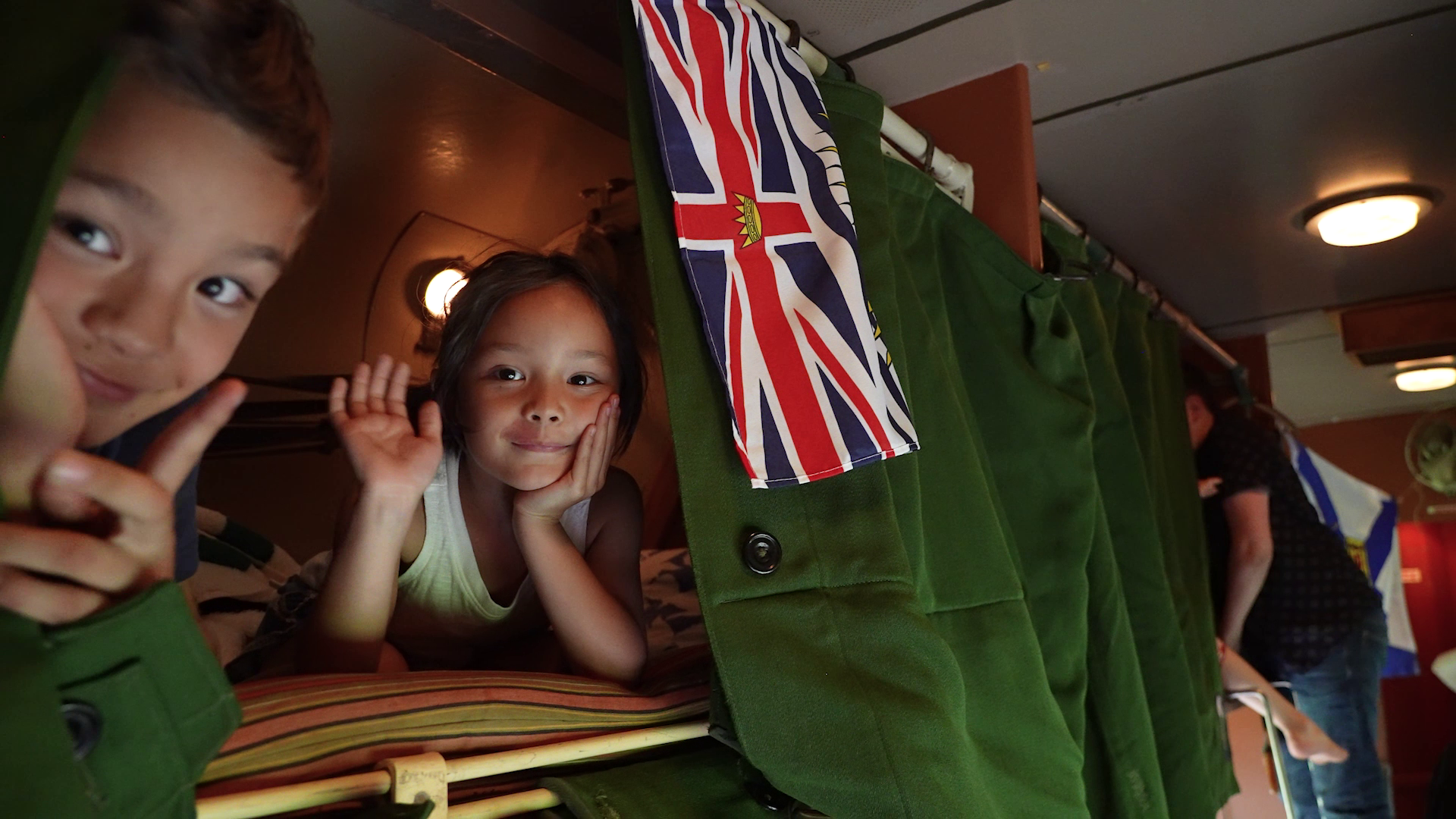

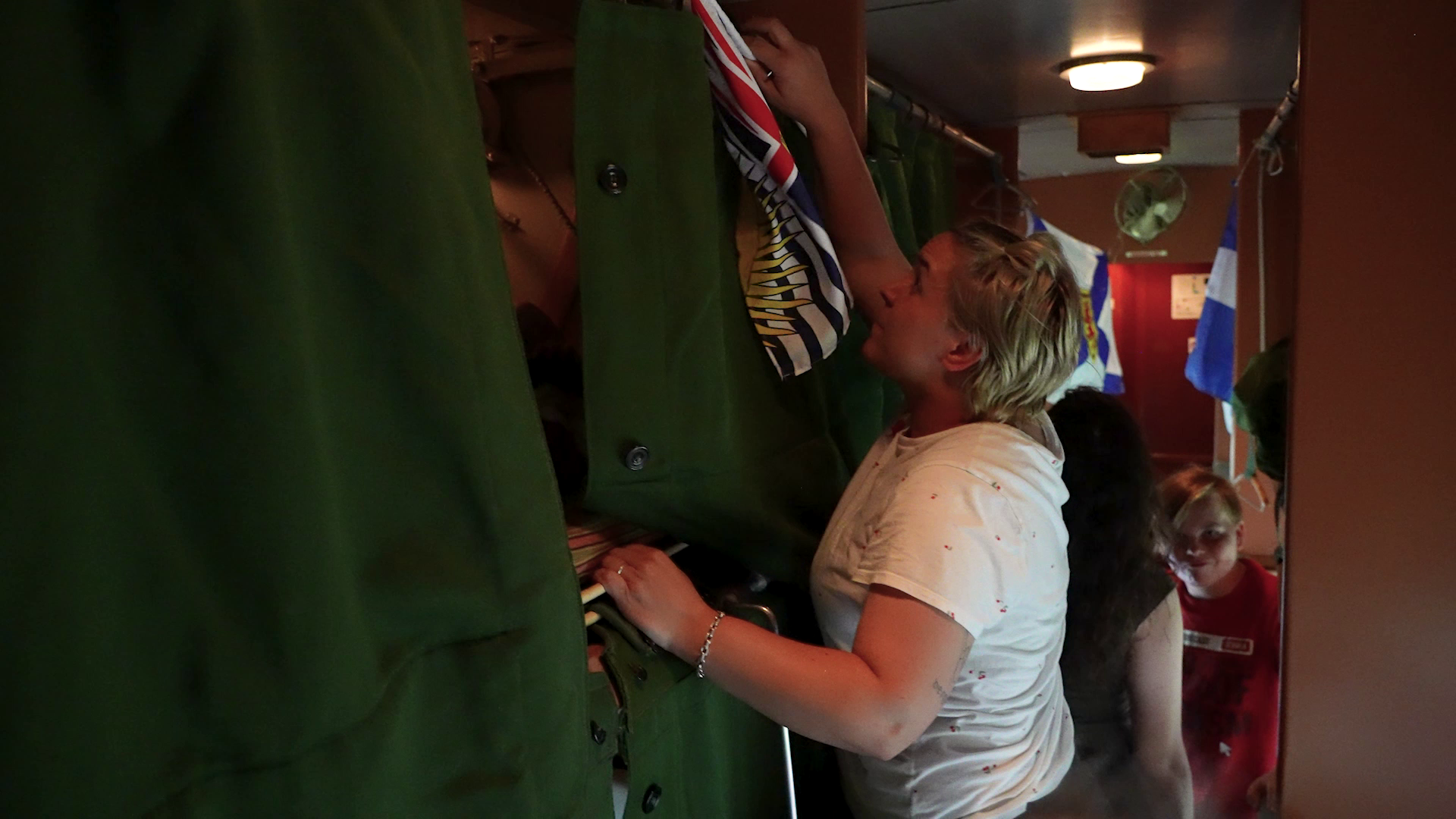
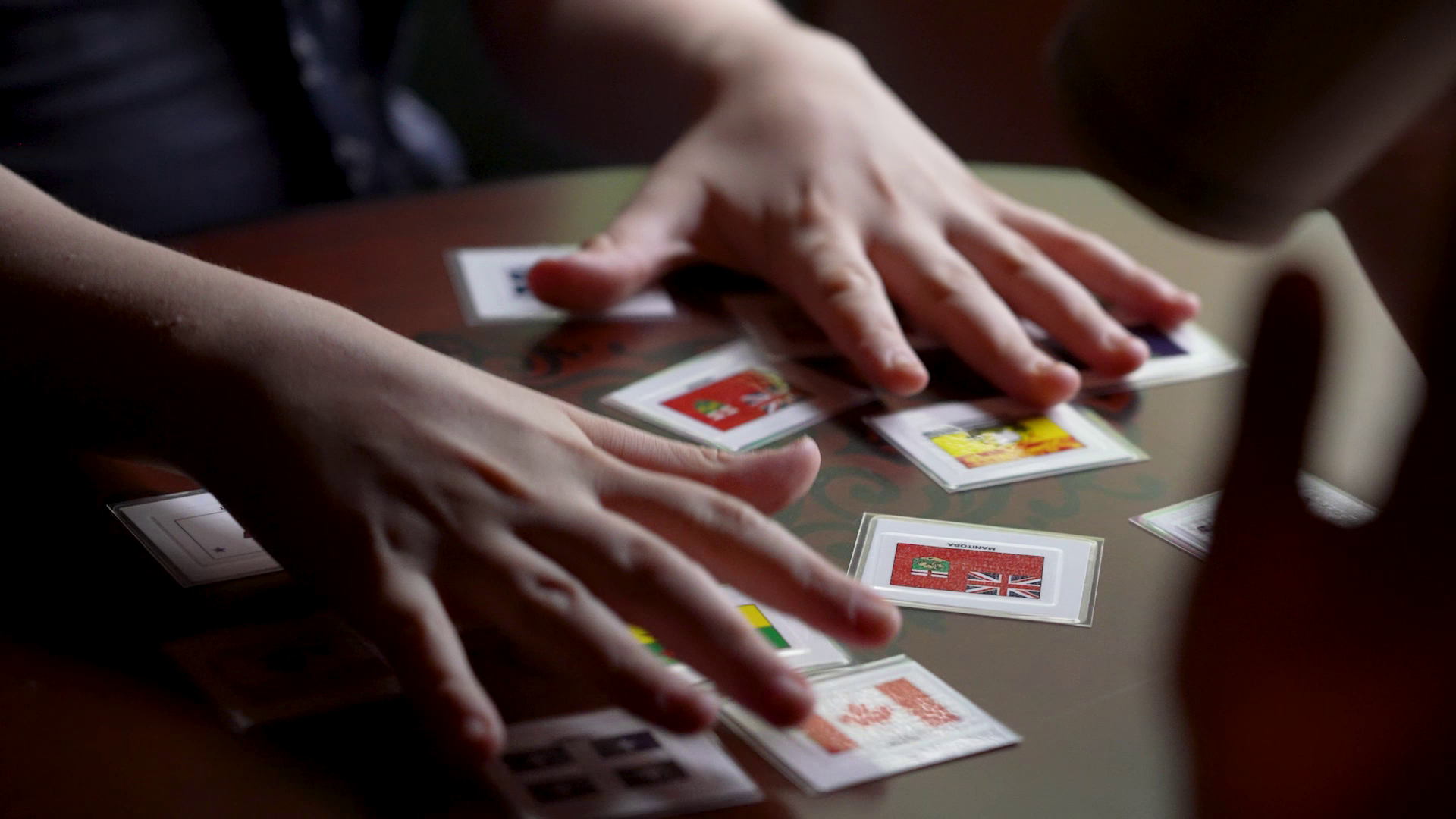
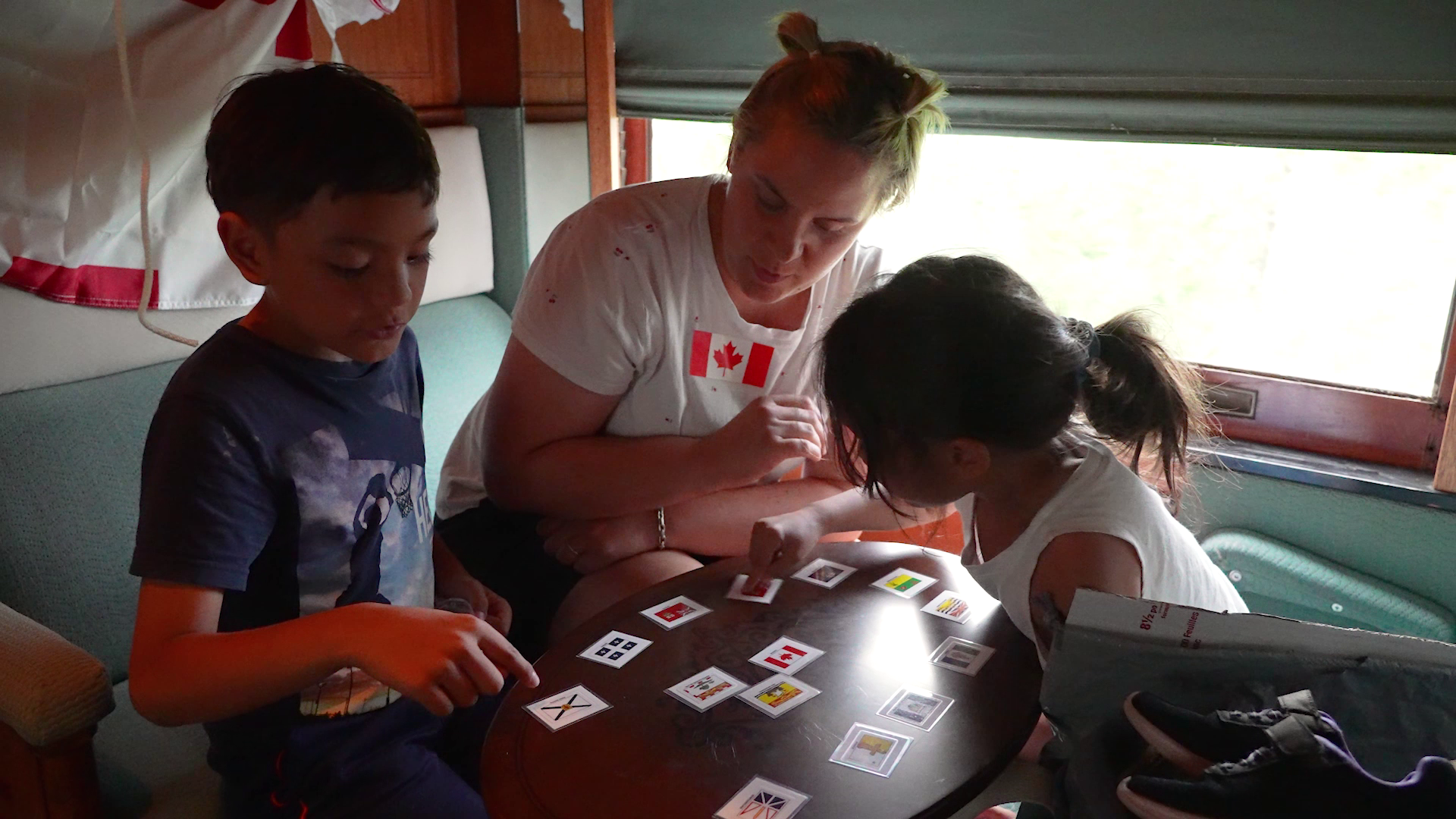
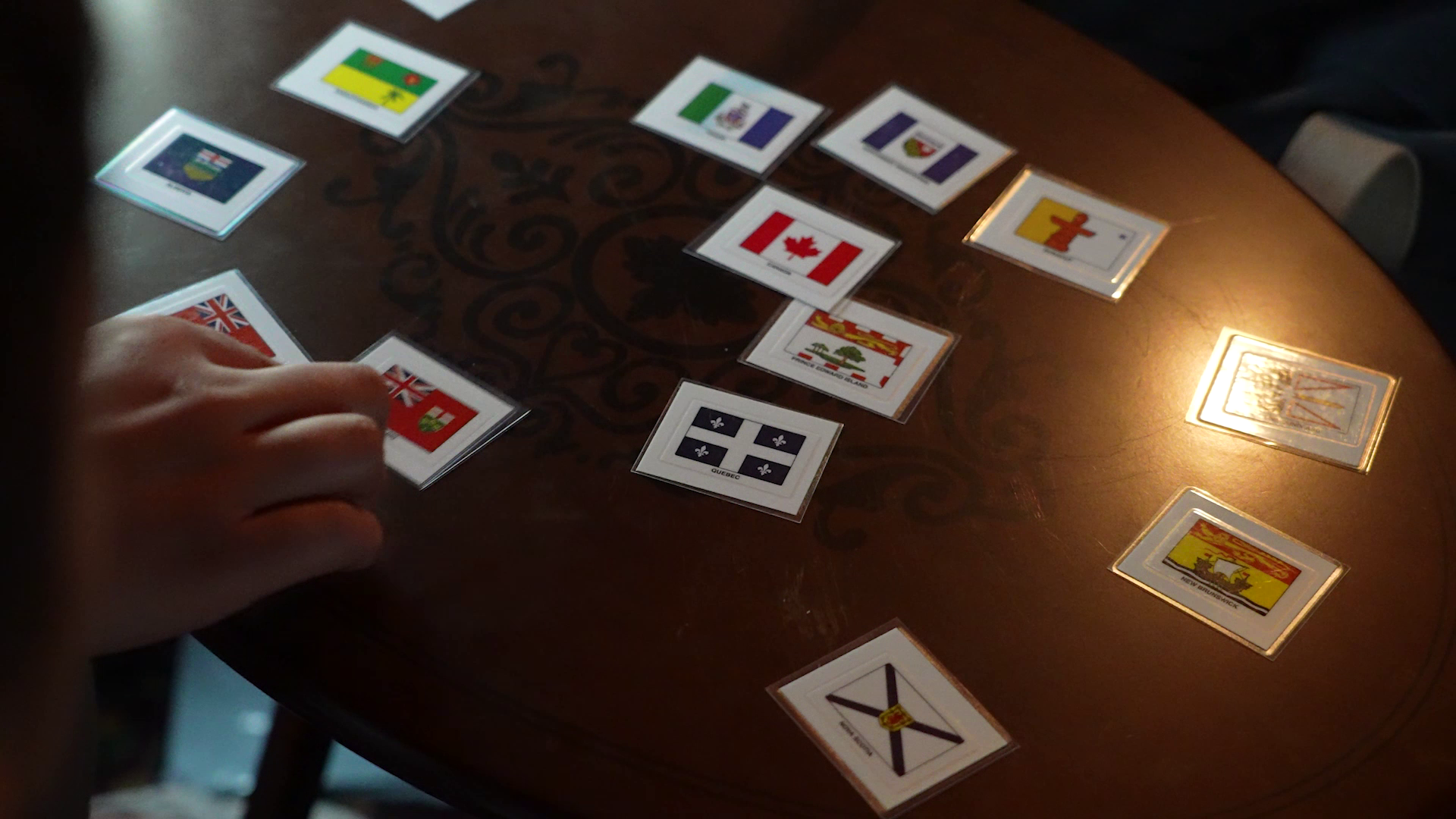
Programs – Coming Soon – Borders, Links and Boundaries (2025)
Borders, Links and Boundaries – This new series looks at the lines, international and internal, that sub-divide the northern half of Turtle Island into provinces and territories, and collectively set our constellation apart from the Union of states that makes up our neighbours to the south.
This program will be available later in 2025. It’s been spurred by talk of “annexation” (annexion in French, Anschluss German) by a US President, something not a serious issue for 150 years. It was, however, a threat in the 100 years before and one reason that Confederation came about.
Facing challenge, and rethinking our relationships, it can help to know we’ve been here before. Confederation came about when the US cancelled a Reciprocity (free trade) agreement, in the belief that the colonies to the north were riding on the coattails of the American economy, and that, with the free ride ended, “they would fall into the US basket, one by one, like ripe fruit.”
This program will look at:
- our natural boundaries (“squiggly lines”) starting with our glaciated, fjord-etched coastline—the longest in the world—that delineates us on three sides
- artificial straight, lines we’ve drawn to subdivide the land into provinces and territories, counties and municipal districts, national parks and First Nations reserves
- our international border with the United States, how it grew up: the macro line and micro adjustments we’ve made and some discussed or proposed but never acted on
- links and passages across these borders for people (visitors and migrants), goods (trade and tariffs), utilities (water, electricity, oil and gas) and underground (illegal)
And we’ll look at annexations that took place within our borders (the “Edmonton Crossings” program is one) and three provinces (BC, NS and NL) that annexed early smaller colonies, as well as the reverse: provinces formed by sub-dividing larger ones (NB and ON).
Self-starters who want to do pre-study on your own can look at a National Film Board/Office National du Film nine-part black and white series called “The Creation of Canada” (links below) narrated by J. Frank Willis. Think of this as a trunk you’ve found in your grandparents’ or great grandparents’ attic or an encyclopedia that was printed before there was air travel or radio.
These are windows on how people thought and saw the world 50 years ago, and things they didn’t see or ignored: Understanding of the insights of First Nations is lacking and comments by Québécois(es) on this being an Anglo-centric view have some justification.
Don’t dismiss this out-of-hand because it’s black-and-white: remember, B&W photos last longer that colour ones did in a pre-digital age. The musical background is a resource in itself; you can learn a lot from finding the words and context to the tunes. And if you find it hard to sit through narration by a male voice, note that female ones are now in the majority on CBC/Radio Canada.
If nine hour-long episodes is a bit much, jump in at Episode 8: “The Struggle for the Border” or 9: “A Second Transcontinental Nation.” You’ll find lines and examples that are very familiar with the annexation talk now coming from the south. See how the context of these examples is the same or different from our time. If you’re fascinated enough to go further after Episode 9, go back to Episode one that asks, “Why are there two countries in North America?”—the question the US President is asking. And if you and he watch the rest of the series, you’ll both know why!
“Creation of Canada Part 1 – Canada and the American Revolution (1490-1763)” on YouTube
https://youtu.be/1zzhWRKT_Y0?si=CMgwL-doMmIr9xtp
“Creation of Canada Part 2 – Canada and the American Revolution (1763-1783)” on YouTube
https://youtu.be/udpVZk5C4EA?si=GigtG8iU04vdhEqd
“Creation of Canada Part 3 – The War of 1812 (1783-1818) on YouTube
https://youtu.be/cRdqaoI_Vc8?si=01sEf7UkhqDvfCHF
“Creation of Canada Part 4 – Dangerous Decades (1818-1846) on YouTube
https://youtu.be/4Nx8knNgbK4?si=tApxWJOStYTLCe2d
“Creation of Canada Part 5 – The New Equation – Annexation and Reciprocity (1840-1860)” on YouTube
“Creation of Canada Part 6 – The Friendly Fifties and the Sinister Sixties (1850-1863)” on YouTube
https://youtu.be/A4uOQl4D1kY?si=OMj6EeiamfFvaJFn
“Creation of Canada Pt 7 – The Triumphant Union and Canadian Confederation (1863-1867)” YouTube
https://youtu.be/KCDAvPHTGj8?si=M7D0Dzwo1re5x1bg
“Creation of Canada Pt 8 – The Border Confirmed: The Treaty of Washington (1867)” on You Tube
https://youtu.be/ElWnIks3m74?si=MdvNAmM-sBflU7NC
“Creation of Canada Pt 9 – A Second Transcontinental Nation (1872)
https://youtu.be/NmUo1RwwG68?si=F2Z9__pilJIvuKJI
Also, a Canadiana documentary (not NFB/OSF)
“How the American Civil War made Canada”
Facing challenge, and rethinking our relationships, it can help to know we’ve been here before. Confederation came about when the US cancelled a Reciprocity (free trade) agreement, in the belief that the colonies to the north were riding on the coattails of the American economy, and that, with the free ride ended, “they would fall into the US basket, one by one, like ripe fruit.”
Programs – Coming Soon – Black History Month (February 2026): Spirituals, the steel rails beat, and the origins or North American Rock
A program in preparation for Black History Month (February) 2026
This program will include songs, stories, and how Rock as we know it originated on the rails.
The Underground Railroad to Canada Song: “Follow the Drinking Gourd”
Traditional Train Spirituals
- “This Train don’t carry no gamblers”
- “I just got off that Sin-bound Train”
- “This ol’ Hammer …”
20th Century Artists
- Huddie Ledbetter (Leadbelly)“Midnight Special”
- Elizabeth (Libba) Cotten“Freight Train”
- Judy Collins“Hey Nellie, Nellie”
- Mike Millius“Ballad of Martin Luther King”
- Vera Johnson“Homer Johnson”
- George Gershwin“Summertime”
- Pete Seeger“O Healing River”
- “We shall Overcome”
- Bob Bossin“Dief will be the Chief again
Book: J. W. Grant MacEwan, John Ware’s cow country
